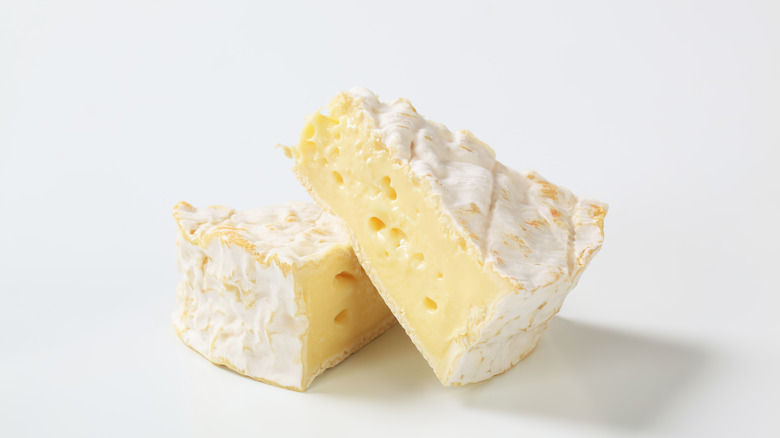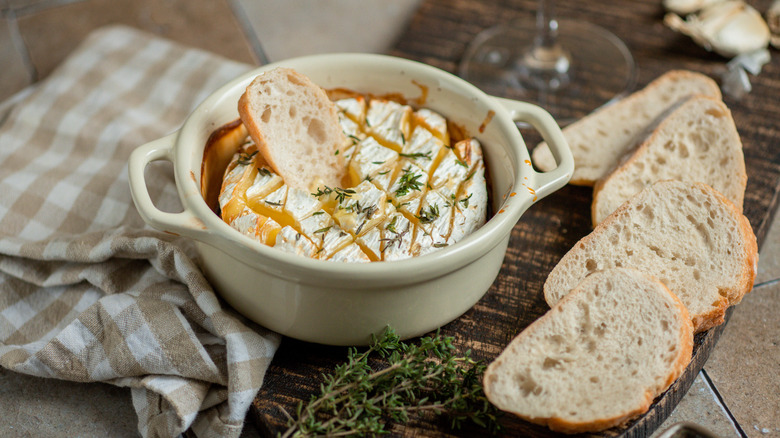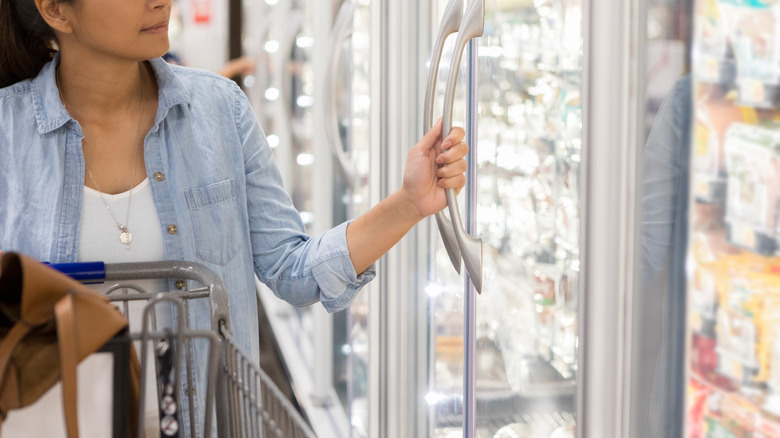The Best Way To Thaw Frozen Cheese To Avoid A Dry, Crumbly Mess
Freezing foods is a crucial way to keep them good for as long as possible; while a package of chicken breasts will only stay good for a few days at most, freezing them means you can load up on a Costco mega-pack, secure in the knowledge that your poultry will stay good for ... well, pretty much forever. But while most people realize you can freeze proteins, there are far more foods you can effectively freeze without a drop in quality. Bread freezes remarkably well, for instance, as do fruits and vegetables.
Another food that freezes well is cheese ... well, mostly. Hard cheeses like cheddar, jack, or parmesan are going to both freeze and thaw without major issue. But softer cheeses like brie, camembert, or ricotta are likely to suffer some major textural (if not taste) issues as a result of the thawing process. Fortunately, there are ways to mitigate that problem.
The key is the speed at which you thaw your soft cheese
Unlike meat or fish where you can easily suspend them in a bowl filled with lukewarm water to thaw them in a matter of minutes to hours, you really need to thaw cheese as slowly as possible. This is actually true for both hard and soft cheese, but soft cheese sees a much bigger difference in outcome. If you thaw cheese (particularly soft cheese) quickly, the end result tends to be a crumbly mess. This doesn't matter quite as much if you're melting the cheese as part of a recipe (cheese will still melt fine even if it's thawed a bit faster), but nobody wants to eat weird, sandy camembert straight from the container.
What this means is the best way to thaw cheese is to actually let it thaw naturally in a cold-but-not-freezing environment like the refrigerator, rather than leaving it out on the counter or (god forbid) using the microwave to defrost. It's also important to note that even under the best circumstances, a soft cheese is going to change in consistency; brie thawed under ideal conditions is still going to have a texture that doesn't quite match a wheel you've just bought from the store.
Freezing and thawing should be done at diametrically opposite rates
The ironic thing is that the best way to thaw cheese to avoid (or at least minimize) texture issues is the exact opposite of how you should be freezing any food (including cheese). The key point is that you always want to freeze foods as quickly as possible; the entire principle of commercial flash-freezing is what made frozen foods truly viable in the first place when Clarence Birdseye invented the concept in 1922. The reason why has to do with ice crystal formation: slowly-frozen foods form larger ice crystals that break down a food's molecular bonds, affecting both taste and texture. When you freeze a food quickly, though, those large crystals don't have time to form, preserving a food's quality. This is particularly important for any food with a higher water content, like soft cheese.
Fortunately, most modern fridges can freeze foods just fine. Maybe they're not quite as effective as the industrial flash-freezers used by large companies like Lean Cuisine, Steak-umm, or, yes, Birds Eye, but you can place cheese (or anything, really) in your freezer without being concerned it'll go bad during the freezing process. Just remember to let your cheese thaw slowly and you'll be fine.


